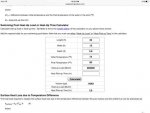Yes but is the net heat transfer to the pool that is important. Without heat loss, the heat transfer to the pool would be exactly the same no matter what flow rate you have as long as the heater is run for the same time period. If you halve the flow rate, the temp gain of the water is 2x because you are heating half the water/min with the same BTUs. But at the higher flow rate, 2x as much water is being heated 1/2 as much as low speed so net net, the heat transfer to the pool is exactly the same for the same period of time. It is all about the BTUs delivered to the pool and not the temperature of the water.
However, there IS heat loss in not only the heater but every part of the plumbing on the way to the pool and heat loss is proportional to the temperature difference of the water and everything else (air, ground, sky) around it. With a lower flow rate, the water is at a higher temperature so more of the heat will be lost on it's way to the pool. Even though the temperature gain of the water may start out a 2x with half the flow rate, by the time it gets to the pool, it will have lost some of the heat so it will be <2x the temperature gain. So there will be less heat delivered to the pool at lower RPM than higher RPM. How much different depends on the heat loss difference which depends on a lot of different factors.




